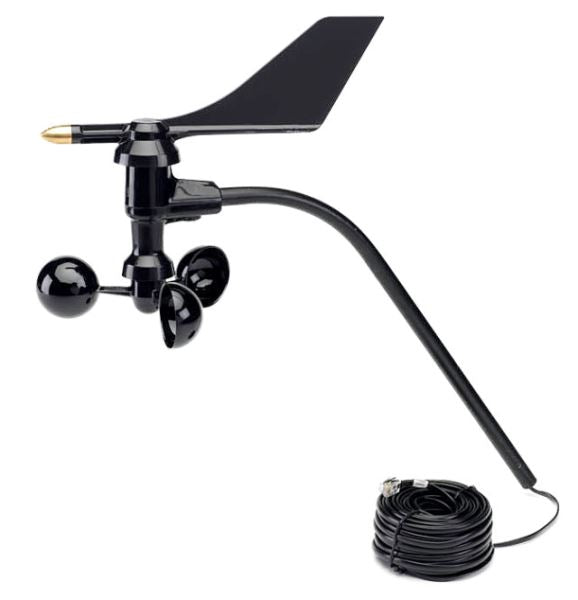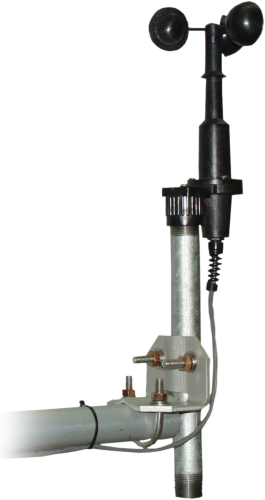Why an Anemometer is Crucial for Your Environmental Information Collection
Why an Anemometer is Crucial for Your Environmental Information Collection
Blog Article
Discovering the Functions and Advantages of Anemometers for Climate Enthusiasts and Professionals
Anemometers stand as important tools in the world of weather condition tracking, dealing with both lovers and experienced specialists alike. These devices offer a home window into the vibrant globe of wind patterns and speeds, supplying very useful data for atmospheric analysis and projecting. From cup anemometers to sonic anemometers, each type brings its distinct set of applications and advantages, clarifying different aspects of weather. As we dive right into the features and benefits of anemometers, a deeper understanding emerges not just of dominating climate phenomena but likewise of the wider ramifications for fields like wind power manufacturing and environmental research study.
Significance of Anemometers in Weather Tracking
Anemometers play a critical role in climate surveillance by supplying accurate measurements of wind speed, aiding in projecting and understanding climate patterns. These instruments, varying from conventional cup anemometers to modern-day ultrasonic anemometers, are necessary for meteorologists, scientists, and weather fanatics alike.

Kinds Of Anemometers and Their Applications
With the essential role anemometers play in weather condition surveillance and projecting, understanding the different sorts of these tools and their applications ends up being essential for specialists and lovers in the field. One of the most common sorts of anemometers include mug anemometers, vane anemometers, hot-wire anemometers, and ultrasonic anemometers. Cup anemometers contain 3 or four mugs mounted on straight arms that rotate with the wind, measuring its rate. Vane anemometers, on the various other hand, use a freely revolving vane to line up with the wind direction, providing both wind rate and direction dimensions. Hot-wire anemometers operate based upon the principle of convective heat transfer, where the cooling result of the air circulation is determined to identify wind speed. Ultrasonic anemometers make use of ultrasonic acoustic wave to determine wind rate and instructions properly.
Each kind of anemometer has its distinct benefits and applications. Mug anemometers are suitable and robust for general climate surveillance, while vane anemometers are preferred for directional dimensions. Hot-wire anemometers are sensitive to reduced air speeds, making them optimal for interior environments. Ultrasonic anemometers are non-intrusive and supply high accuracy, usually used in research study and specialized climate monitoring applications. Recognizing the features and applications of each type of anemometer is vital for choosing the most appropriate tool for details weather keeping an eye on requirements.
Benefits of Using Anemometers in Projecting
In weather forecasting, the usage of anemometers provides important advantages for improving the precision of climate forecasting. Anemometers gauge wind speed and direction, supplying critical data for forecasting climate patterns. By incorporating wind information right into projecting versions, meteorologists can better understand the activity of weather condition systems, expect changes in atmospheric problems, and problem extra accurate forecasts.
Moreover, anemometers play a crucial function in evaluating possible weather condition risks. Keeping an eye on wind speeds aids forecasters anticipate serious weather events such as cyclones, tornadoes, and winter season tornados with greater precision. This early warning system allows authorities to release prompt informs and execute essential safety measures, lowering the dangers to life and property.
Additionally, anemometers help in enhancing renewable resource production. By examining wind patterns, meteorologists can identify appropriate locations for wind farms and forecast energy output, adding to the efficient generation of wind power.

Anemometers in Wind Power Manufacturing
Provided the crucial function anemometers play in giving accurate wind data for weather condition forecasting and danger evaluation, their significance encompasses the realm of wind energy manufacturing. Anemometers are crucial tools in the area of wind power, where the dimension of wind rate and instructions is vital for identifying the feasibility and effectiveness of wind generator installations. By accurately measuring wind speeds at differing elevations, anemometers assist optimize the placement and layout of wind generators to maximize energy result.
In wind ranches, anemometers are tactically placed to accumulate real-time wind information that is used to examine the prospective energy manufacturing of a website. This data is instrumental in establishing the financial viability of wind power tasks and in forecasting power generation to guarantee grid security. Additionally, anemometers help Extra resources in monitoring wind conditions to maximize turbine efficiency, stop damage from high winds, and ensure the safety of personnel functioning in the vicinity of wind turbines.
Enhancing Weather Condition Understanding With Anemometers

Anemometers play an essential function in enhancing our understanding of microclimates. These localized climate condition can vary dramatically from more comprehensive regional projections, making it important to have precise information for details locations. anemometer. By purposefully putting anemometers in various places, scientists can collect in-depth information on how wind behaves in different terrains, metropolitan atmospheres, or bodies of water
In addition, anemometers add to improving weather condition projecting designs by supplying real-time data on wind habits. This info is particularly useful for forecasting extreme weather events, maximizing agricultural methods, and supporting sectors like aeronautics and maritime navigation. Generally, anemometers are important tools that allow us to dive deeper right into the intricacies of weather systems, eventually bring about even more accurate predictions and better-informed decisions.
Verdict
Finally, anemometers play a vital function in weather condition monitoring and projecting by gauging wind rate and direction. They are necessary devices utilized by weather fanatics and experts to gather precise information for predicting climate patterns and analyzing prospective impacts. Anemometers additionally have applications in wind energy manufacturing, additional highlighting their value in both meteorology and renewable try this site resource sectors. On the whole, anemometers add to enhancing our understanding of weather sensations and boosting forecasting abilities. anemometer.
From cup anemometers to sonic anemometers, each type brings its unique collection of applications and advantages, dropping light on various aspects of atmospheric problems. These tools, ranging from typical cup anemometers to modern ultrasonic anemometers, are crucial for meteorologists, scientists, and weather lovers alike. The most common types of anemometers include cup anemometers, vane anemometers, hot-wire anemometers, and ultrasonic anemometers. Cup anemometers are durable and ideal for basic weather condition surveillance, while vane anemometers are favored for directional dimensions. Anemometers are essential tools in the field of wind energy, where the dimension of wind rate and instructions is crucial for figuring out the feasibility and performance of wind turbine installations.
Report this page